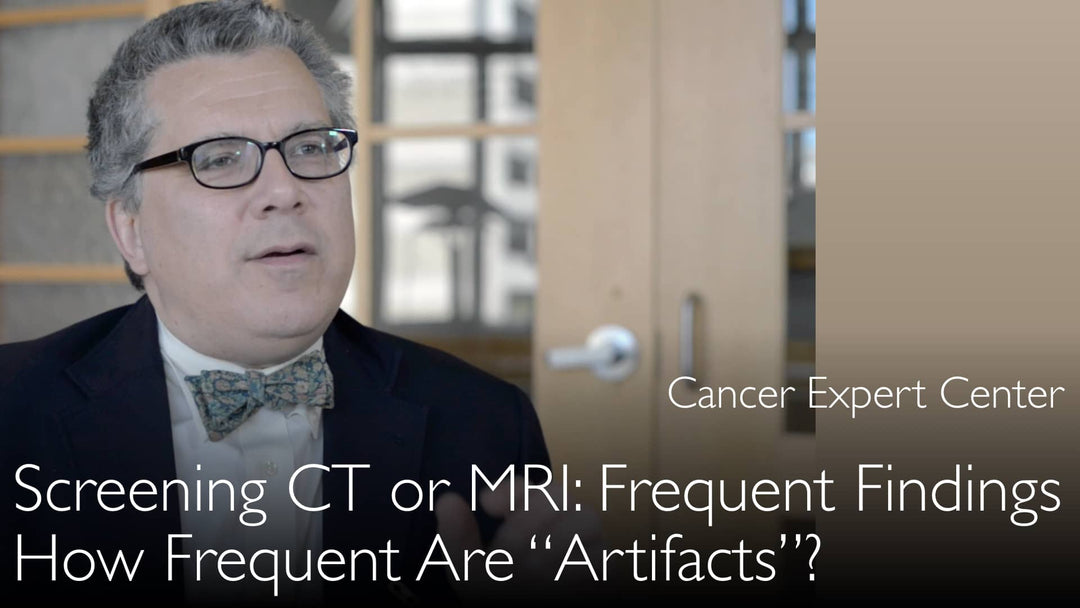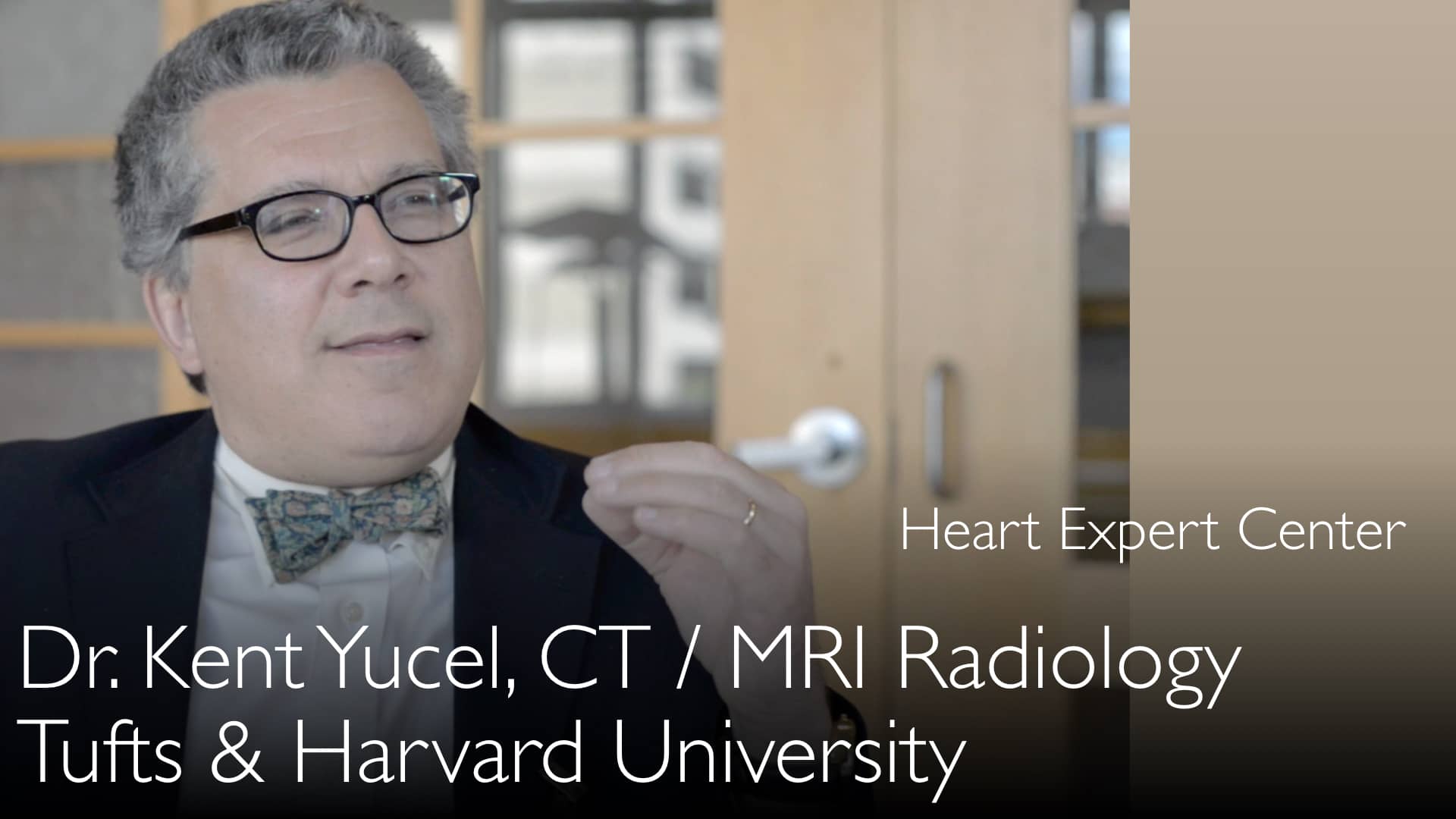מומחה מוביל ברדיולוגיה והדמיה מתקדמת, ד"ר קנט יוצ'ל, MD, מסביר את הממצאים השכיחים בסריקות CT ו-MRI לגילוי סרטן בגוף מלא. הוא מפרט כיצד רוב הממצאים הם ממצאים שפירים אקראיים כמו ציסטות קטנות או צלקות ישנות. ד"ר קנט יוצ'ל, MD, מדגיש את הסיכון המשמעותי לחרדת מטופלים ופרוצדורות מעקב מיותרות. הוא מציין את התשואה האבחונית הנמוכה ואת היעדר הראיות ליתרון בתמותה משיטות סינון אלו.
הבנת ממצאים אקראיים בבדיקות CT ו-MRI לגילוי סרטן בגוף המלא
קפיצה לפרק
- ממצאים שכיחים בבדיקות סקר
- האתגר באבחון ציסטות קטנות
- נקודות ונגעים שפירים
- חרדת מטופלים וסיכוני מעקב
- תשואה אבחונית נמוכה של סקירות
- תמלול מלא
ממצאים שכיחים בבדיקות סקר
סריקות CT ו-MRI של הגוף המלא לגילוי סרטן מגלות לעתים קרובות ממצאים אקראיים. ד"ר קנט יוצל, MD, מומחה ברדיולוגיה, מסווג את התגליות השכיחות הללו לשתי קטגוריות עיקריות. הממצאים השכיחים ביותר הם אוספי נוזלים קטנים הידועים כציסטות. מבנים שפירים אלה יכולים להופיע באיברים שונים ברחבי הגוף במהלך בדיקת סקר.
האתגר באבחון ציסטות קטנות
הבחנה בין ציסטה קטנה לגידול פוטנציאלי מהווה אתגר אבחוני משמעותי. ד"ר קנט יוצל, MD, מסביר שכאשר ציסטה היא בגודל סביר, רדיולוגים יכולים לזהות אותה בביטחון ולהתעלם ממנה. עם זאת, סקירות חושפות לעתים קרובות נגעים זעירים שבהם מאפייני הדימות אינם ברורים. אי-ודאות זו מונעת אבחנה שפירה חד-משמעית, והופכת ממצא שלא היה משמעותי otherwise לדאגה קלינית משמעותית.
נקודות ונגעים שפירים
מעבר לציסטות, סריקות סקר חושפות לעתים קרובות נקודות שפירות נוספות. ד"ר קנט יוצל, MD, מציין שאלה יכולים להיות שרידים של זיהומים ישנים, כמו רקמת צלקת מדלקת ריאות בריאות. גידולים שפירים קטנים כמו המנגיומות בכבד הם גם ממצאים אקראיים שכיחים. בדומה לציסטות, גודלם הקטן בזמן הגילוי מקשה מאוד לאשר שהם בלתי מזיקים ללא ניטור ארוך טווח.
חרדת מטופלים וסיכוני מעקב
כל ממצא חריג בסריקה יוצר חרדה עצומה אצל המטופל. ד"ר יוצל ממחיש את התוצאה הקיצונית עם מקרה היסטורי שבו רדיולוג עבר ניתוח ריאות מיותר עבור נקודות שפירות. הפרוטוקול הסטנדרטי כיום כולל מעקב הדמייתי סדרתי. מטופלים עשויים להזדקק לסריקות CT או MRI חוזרות every six months or annually for three to five years כדי להוכיח שנגע אינו גדל, וחושף אותם לקרינה חוזרת ולחץ משמעותי.
תשואה אבחונית נמוכה של סקירות
היתרון של סקירת גוף מלא עולה במידה ניכרת על סיכוניו. ד"ר קנט יוצל, MD, קובע שיש very little evidence that these scans find significant cancers early enough to improve mortality. התהליך יוצר cohort גדול של מטופלים העוברים years of unnecessary follow-up to prove a lesion is insignificant. ד"ר אנטון טיטוב, MD, often discusses the critical importance of seeking a medical second opinion to confirm findings and avoid overtreatment.
תמלול מלא
ד"ר אנטון טיטוב, MD: בדיקות CT או MRI לגילוי סרטן מבוצעות frequently. What are typical and frequent findings on screening CT or whole body MRI? What do these common findings mean for patients who undergo cancer screening by MRI or CT? What happens when a small lesion is found on MRI or CT scan? A leading MRI and CT radiologist discusses frequent findings on screening MRI and CT scans.
סריקות דימות תהודה מגנטית (MRI) לגילוי סרטן ללא סיבה specific הופכות ליותר פופולריות. ראיינת וידאו עם מומחה מוביל ברדיולוגיה, specialist in CT and MRI. סריקות MRI לגילוי סרטן השד הן now an established method. גילוי סרטן עם MRI של הגוף המלא advertised to consumers everywhere.
There might be benefit for low dose CT scan for lung cancer screening in high risk individuals. There are new guidelines on benefits and harms of CT screening for lung cancer. הערך האבחוני של סריקות CT ו-MRI הוא נמוך. Usually small cysts are found. But often doctors do not know if findings are cysts or cancer. So more invasive and radiation-involving tests are done repeatedly.
Get a medical second opinion to confirm CT findings and MRI findings and understand their meaning. Medical second opinion helps to choose the best treatment strategy for cancer on MRI or CT scan. Seek medical second opinion on cancer and be confident that your treatment is appropriate.
ד"ר אנטון טיטוב, MD: You mentioned that 99% of findings on a screening CT for cancer or screening MRI for cancer are incidental findings without much significance. Nevertheless, probably any finding on MRI or CT creates a lot of anxiety for a patient. And such incidental findings on CT or MRI are often followed up by invasive methods. People use pelvic, abdominal, chest, and brain MRI and CT to screen for cancer. What are common findings on screening MRI?
ד"ר קנט יוצל, MD: ממצאים אקראיים ב-CT או MRI basically falling into two classes. There are small fluid collections, we call them cysts. They can happen in a variety of organs. Cysts are generally benign. But the problem is, when cysts are small, it is very difficult to tell for sure that they are cysts.
So we see these cysts in regular patients, who are being evaluated for some other reason. And if such incidental lesions are of a reasonable size, we can say they are cysts. And we can ignore them. But the problem when you start screening patients by MRI or CT, you start finding these small cysts. And you cannot be sure that they are cysts or not. So they are a problem.
The other thing is there are some benign spots, for lack of a better term. They can happen in the lungs, from old pneumonias or infections. They can happen in the liver. They can be small benign tumors. And again, when they are small especially, we can have great difficulty telling whether they are significant or not.
When this was first started there was a famous radiologist in America. He got a screening CT scan. And they found spots in his lung. And he then ended up having lung removed. He had lung surgery for these spots. They turned out to be nothing.
So we have learned over the years not to be so aggressive with CT spots and dots. And we are doing more and more follow up imaging after screening CT or MRI first identified them. So a lot of these patients will come back every six months, or every year. They have repeat CT or MRI for three or four or even five years to show that these lesions are not growing.
So that is the risk of screening MRI. It is the big risk of these screening modalities. It will lead to a lot of patients are going to end up having to come back for three, four, even five years for additional imaging. To prove that things that are not significant are, in fact, insignificant.
In return, there is very little evidence that they will benefit in terms of finding significant lesions earlier to make the MRI or CT screening worthwhile. Cancer screening CT or MRI - frequent findings. Video interview with leading expert in radiology, CT and MRI specialist. What to do about incidental findings?





